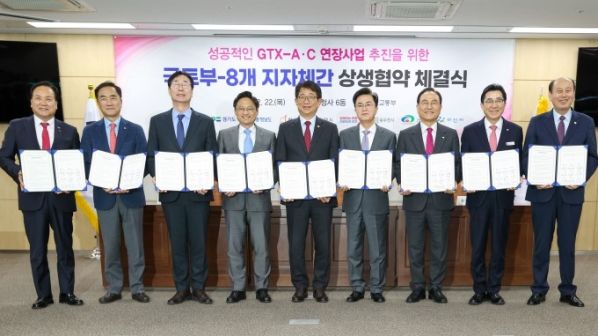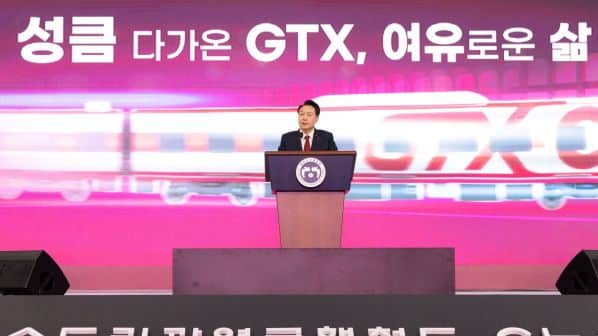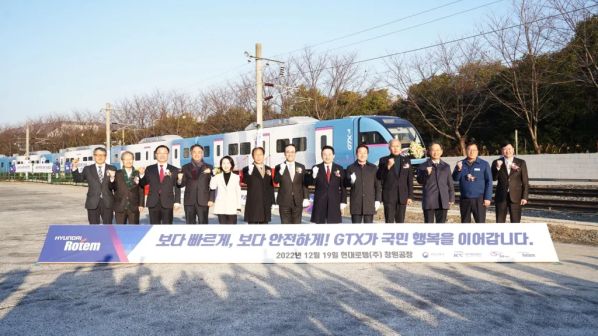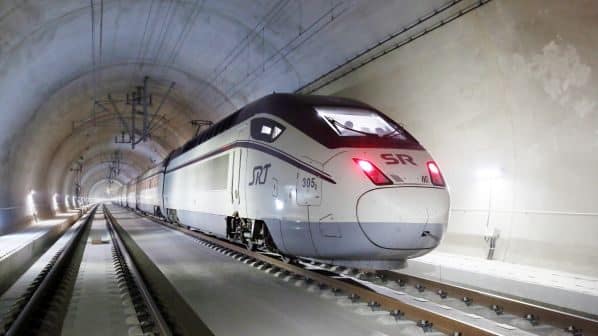THE Ministry of Land, Infrastructure and Transport (Molit) has signed an agreement with six local governments in the Korean provinces of Gyeonggi and South Chungcheong to accelerate work on proposed extensions to GTX lines A and C.
The agreement was signed on February 22 by Molit minister, Mr Park Sangwoo, and representatives of the Dongducheon, Hwaseong, Osan, Pyeongtaek, Cheonan, and Asan local governments.
Under the proposals, the GTX-A express commuter line would be extended by 20.9km from its southern terminus of Dongtan to PyeongtaekJije, which currently has a station on the Super Rapid Train (SRT) high-speed line between Dongtan and Seongnam.
Two extensions to GTX-C are proposed, including a new 9.6km section at its northern end from Deokjeong to Dongducheon. At its southern end, GTX-C would be extended by 59.9km from Suwon to Asan in South Chungcheong province.
The agreement follows the promise made by Korea’s president, Mr Yoon Suk Yeol, at the start of work ceremony for GTX-C on January 25 to deliver GTX projects as soon as possible and open the proposed extensions at the same time as those lines now under construction.
Dongducheon, Hwaseong, Osan, Pyeongtaek, Cheonan and Asan will all be served by the GTX-C extensions and in October last year they submitted a joint proposal to Molit to advance the project with local government funding based on the results of their own feasibility study.
In response, Molit began further work on the feasibility of the project. According to Park, it is hoped that the extensions will stimulate local economies by improving their connectivity and attracting new investment, leading to the creation of new regional hubs directly connected by GTX lines.
Feasibility studies are also due to begin for the GTX-A extension by the end of this month. If they are completed by the end of the third quarter of this year, the local governments will be able to sign an agreement with infrastructure manager Korea National Railway (KNR) and the selected operator by the end of2024 and move into the design phase.
While projects in the national rail plan are usually required to undergo preliminary feasibility studies, the GTX-A and C extensions will be exempt, as the local governments have agreed to fund the projects themselves. According to Molit, this shortens the delivery timescale by up to four years and makes it possible for the extensions to open in 2028 with the rest of the GTX network.
Meanwhile, full-scale test runs have begun on the Dongtan - Suseo section of GTX-A. They are due to take place over a 20-day period as final operating and safety checks are carried out ahead of the new line opening on March 30.
“To ensure the swift progress of the GTX-A and C extension projects, close collaboration is crucial,” Park says.
“With the GTX-C extensions in particular, which involve the collective efforts of many stakeholders, I sincerely ask for active cooperation and close communication from the local governments involved.”
For detailed data on Asian rail projects, subscribe to IRJ Pro.




